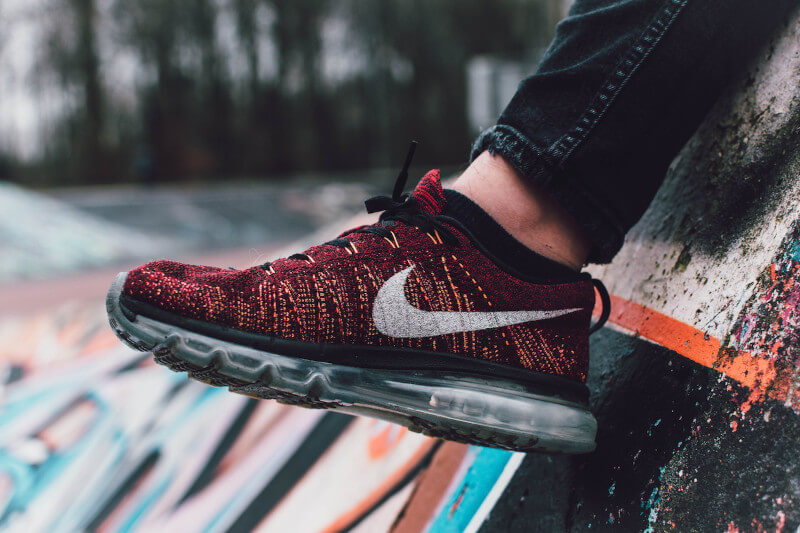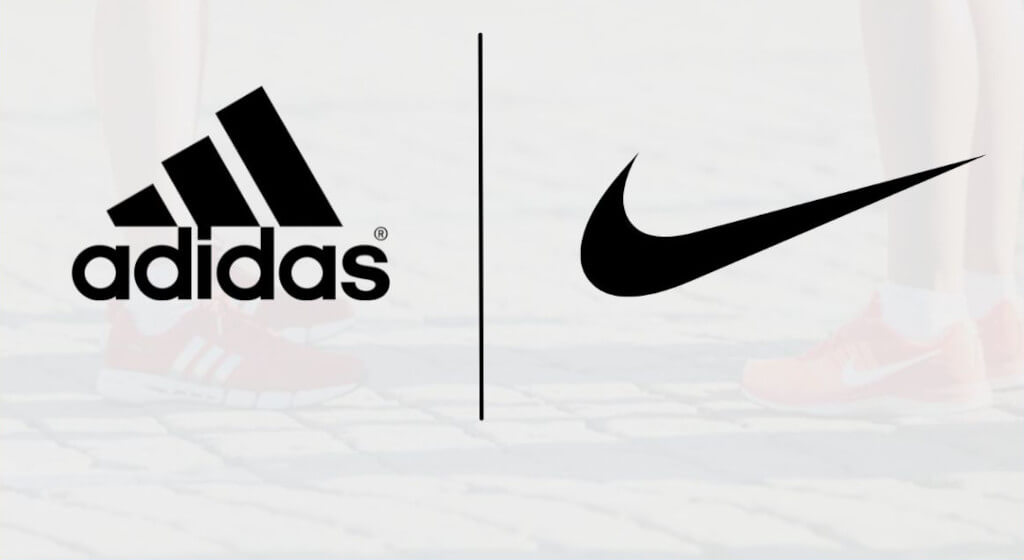An in-depth look at how Adidas and Nike stack up against one another in terms of performance, market share, and innovation.
Introduction
There’s been a long-running argument regarding whether Nike or Adidas makes the superior sneaker. You know the value of a good pair of shoes if you travel frequently. Two shoe companies immediately spring to mind. There is a lot of historical interest in the performance and financial success of these two companies. Both of these names are well-known for being industry leaders. Explore the realm of trainers to find out who reigns supreme in the Nike vs. Adidas war.
A Look Back at Adidas and Nike
Adidas
Sportswear giant Adidas continues to dominate the European market and ranks second worldwide, behind only Nike. Adolf Dassler and his brother Rudolf Dassler started the company. They founded the Dassler Brothers Shoe Company as brothers. Adolf is a sports fan who likes to participate in football, soccer, boxing, and skiing. He was well aware that different sports call for different footwear, and that footwear choices may make or break an outing. He saw a need for shoes specifically designed for sports and set out to fill it, with the hope that his designs would help players perform better.

Rudolph started PUMA and Adidas started Adidas after the brothers split up in 1949. During that period, Adidas’ main rival was PUMA. Adi + Schuh = Adidas, which is a combination of the first two letters of Adolf’s first and last three initials of his second name. The distinctive qualities of Adidas’ footwear inspired the logo’s design; the three stripes stand for both comfort and the company’s signature shoe style.
Nike
The American sportswear behemoth Nike was established on January 25, 1964, making it the world’s oldest and largest athletic footwear company. Nike was the most valuable sportswear company in the world by 2014, with a market valuation of $19.1 billion. Blue Ribbon Sports (BRS) was Nike’s original name. Bill Bowerman and Phil Knight started the company, Nike. In 1964, Phil Knight competed for the track team at Oregon. In 1971, the company name BRS was formally changed to Nike, after the Greek goddess of triumph. Before expanding into other markets, the company distributed footwear made by the Japanese brand Onitsuka Tiger.
By 1917, Nike’s partnership with the Japanese shoemaker was winding down. At that time, Nike was already out on its feet with its first shoe line and debuting the SWOOSH. This work of art was created by Carolyn Davidson. Nike’s “There is no finish line” marketing campaign debuted in 1977. The company Nike used the phrase “just do it” after 1988. This has helped Nike successfully broaden its product reach into new markets throughout the world.
Revenue and Success of Adidas and Nike
Adidas
Over 61,000 people were working for this shoe company all over the world in 2021, and the business made over $21 billion. The company made it a priority to rule the North American sporting goods market after learning that the region represented 40 percent of the worldwide market in 2017. This is why this sector has always been Adidas’ primary priority. Although Adidas isn’t as large as Nike, the company still manages to stand out in the shoe industry thanks to its keen insight into what customers want.
Nike

Over 73 billion individuals were employed by this shoe company across the globe in 2021, and the business made over $21 billion in revenue. Nike chose to focus on the North American market because it generated the most money for the company worldwide in 2017. Nike is backed by a solid marketing and sponsorship deal. Nike’s massive 2017 income was credited in part to a partnership signed in 2015. Nike beat out Adidas for the contract to supply NBA uniforms.
Production and Suppliers: Nike vs. Adidas
While most of Nike’s production occurs in Asia, the company also has factories in the United States and Europe. Nike also owns over 500 factories across four different firms that produce footwear, equipment, and apparel, with a minor portion of the production taking place in Africa. China and Vietnam are the world’s largest producers of Nike shoes, making up 36% of the total.
Meanwhile, Adidas has over 800 factories in 55 different nations. About 40% of its footwear comes from Vietnam, while 25% comes from Indonesia. Adidas only makes 19% of its shoes in China.
Nike vs. Adidas: How People See Them
In this respect, it would appear that Adidas has beaten out Nike thanks to its partnerships with influential people in the culture, such as athletes, actors, and artists. Adidas shifted its strategy to prioritize casual footwear for the urban environment. It features contributions from famous people such as Kanye West and Beyonce. Nike, on the contrary, is more interested in athletics than in pairing up with famous people. Adidas has a greater shot at the market if it takes advantage of the athleisure movement, which has brought athletic gear into the workplace.
Kanye West has become one of the most widely recognisable faces in the Nike vs. Adidas rivalry, and not just because he has a fashion company worth a billion dollars thanks to his Yeezy trainers. Kanye West and Nike originally collaborated on three shoe types over five years. In 2014, Kanye West said that he was ending his connection with Yeezy and relocating it to Adidas. Adidas released Yeezy in 2015, and since then, the two companies have had great success working together.
Nike, on the other hand, teams up with a different kind of A-lister. Thanks to Michael Jordan’s input, the Air Jordan trainer has become one of the most coveted names in high-end athletic footwear. These shoes first hit the market in 1985 and have not lost their appeal. Some people, though, argue that they are no longer hip or trendy. It is also noteworthy that in 2018, Nike formed a partnership with the Paris Saint-Germain Football Club, making them the first professional sports team to wear Jordan brand apparel. Football stars Neyman and Mbappe were the focus of the ads. It’s crucial to both businesses’ success since it compels them to strengthen ties with customers on an individual basis. Adidas is quickly gaining ground on Nike in terms of market share because of the brand’s hipster appeal. While Nike controls the most recognisable brand, Adidas is rapidly gaining ground.
Nike vs. Adidas: Construction
Make sure your running shoes have a good fit before you hit the pavement. There are times when you should wear shoes with a narrower width, but you might find that shoes with a wider width are more accommodating overall. Knowing where each brand stands is crucial when contrasting Nike vs Adidas. There are several differences between the two companies despite the similarities in the features they both offer in their running shoes.
Uppers are the whole portion of a shoe that encases the wearer’s foot. To link the insole and outsole, the upper is constructed by stitching or moulding together all of the components that sit above the soles.
If you’re looking for uppers that are breathable, lightweight, and comfy, go no further than Nike. The Nike Flyknit is constructed with strong fibres that won’t add excess heft. The upper has fibers woven into the fabric to make it snug and comfortable, much like a sock. Each pair of Nike trainers has a unique knit design. The meshes on some of the shoes are tighter, so they provide more support, while the weaves on others are looser, so they allow for more movement.
But Adidas’ lightweight, ventilated uppers keep your feet feeling great no matter how far you run. The knitted uppers of Adidas shoes are often praised for their wearability.
Midsole

Although Nike provides several midsole options, carbon plates aren’t a standard component of the brand’s footwear. Nike React is Nike’s premium midsole innovation. This innovation makes use of a midsole that is extremely cushioned but still provides a good amount of energy return. It also doesn’t add too much weight to the shoe, which is a plus. When you compress a pair of Nike React shoes, they feel soft and pillowy for a moment before returning to their normal shape. This means that the Nike shoe’s midsole is exceptionally cushioned and responsive.
Conversely, Adidas’s Boost technology, introduced in 2013, has become its signature feature. Thermoplastic Polyurethane with pressure-responsive characteristics is a revolutionary cushioning technology. The compression function significantly improves the show’s resilience to stress, allowing it to quickly recover from disturbances. This technology’s superior energy returns help ensure reliable operation. The Boost technology not only provides exceptional energy returns, but also durability, temperature regulation, comfort, and adaptability in a wide range of climates.
Outsole

In the Nike vs. Adidas duel, the outsole is also crucial. No matter where you buy them, your Nike trainers are guaranteed to last. The thick rubber outsoles of the shoes contain deep grooves to properly channel water. Conversely, the Continental Rubber outsoles used by Adidas ensure superior grip. As a result, even when wet, the trainers are secure and simple to use. This rubber outsole is known for being long-lasting and sticky, making it a great option for jogging even in wet conditions.
Nike vs. Adidas—What the Future Holds
The shoe business is expected to be worth $85.54 billion in the United States by 2022, which means that any brand that doesn’t spend on marketing will fall behind the competition. Given its scale, it’s no surprise that major sports sponsors battle for a slice of the pie. It’s no secret that both Nike and Adidas are winning the Nike vs. Adidas debate and breaking sales records. While Adidas seeks to expand in the North American market, Nike has been focusing on China. As Nike explores novel materials, Adidas prioritizes form. Nike may have more name recognition, but when comparing Nike vs. Adidas, Adidas comes out on top. Both brands are excellent in their own right, so ultimately it comes down to personal preference.
